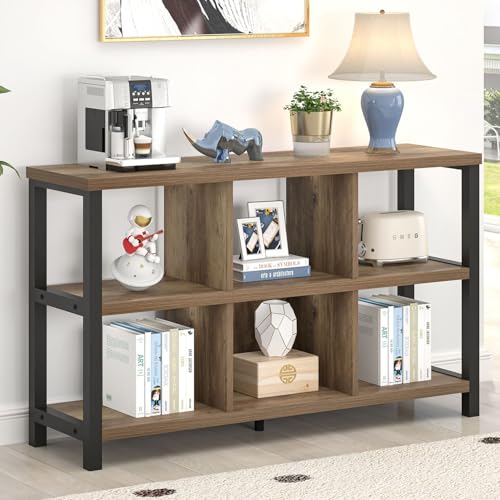This post may contain affiliate links, including those from Amazon Associates. If you make a purchase through these links, I may earn a commission at no additional cost to you. Learn more about our affiliate policy.
Morning light filtering through sheer curtains, the quiet weight of a blanket, the stillness of a space that feels open enough to breathe.
Even in a studio apartment, where every square foot has a role, your home can carry this sense of peace. You do not need more space to feel more space. You need intention, light, and a few small edits that allow your nervous system to soften.
This guide gathers ten ways to help your tiny studio apartment feel airy and peaceful. They are not expensive renovations or complicated projects.
They are achievable shifts in color, light, and layout that open your home and calm your senses.
Why Air and Peace Make a Difference in a Studio
Living in one room has its own rhythm. Everything happens in one space: sleeping, eating, working, resting. Without intention, the overlap can feel crowded and overstimulating.
Our nervous systems respond quickly to clutter, blocked light, and competing zones.
When a studio is edited with care, it can feel like sanctuary. Breathing room is not measured only in square footage.
It is measured in how much light enters, how many items compete for your attention, and whether the layout allows the body to exhale. Small design choices become nervous system support.
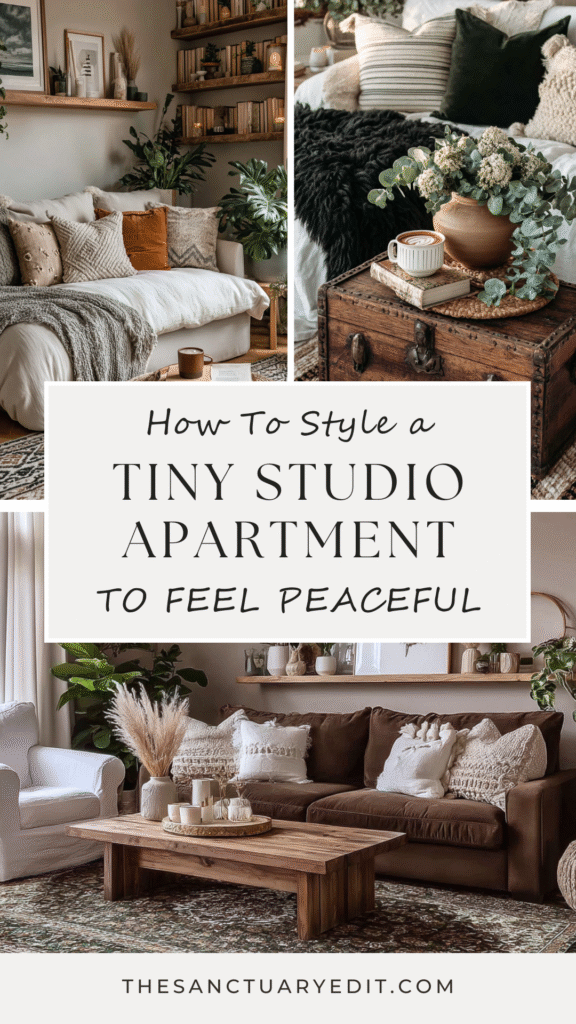
Light, Calm Color Palette
Color shapes how space feels. In a small apartment, light tones expand the room and invite calm. Whites, warm creams, soft greys, and muted pastels reflect light instead of absorbing it. They create visual quiet.
You do not need to repaint everything. Even adding one or two lighter elements can shift the feel.
A pale rug, light curtains, or a neutral slipcover can soften darker pieces already in your space. Keep accent colors gentle and minimal so the room feels cohesive.
Maximize Natural Light
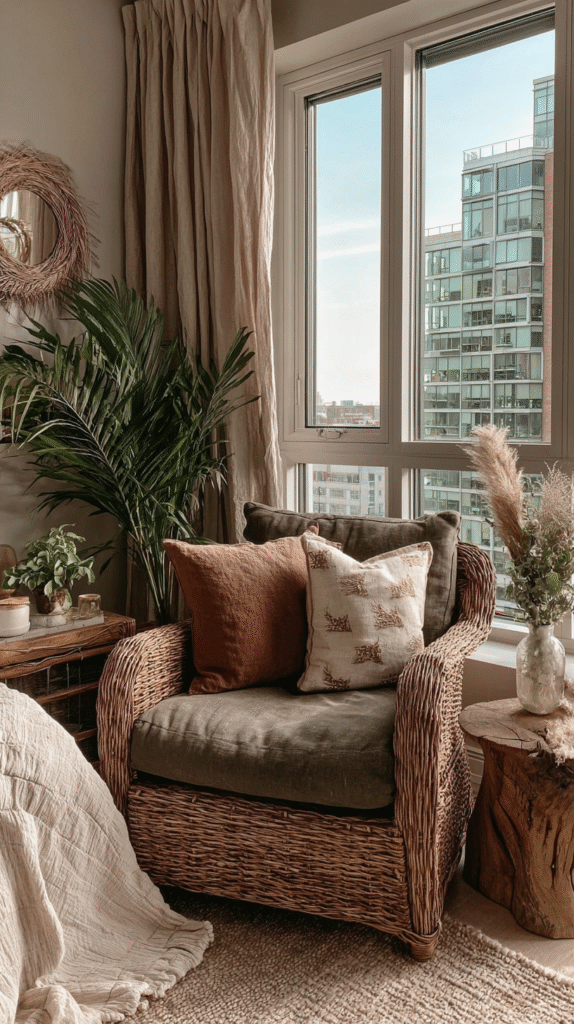
Natural light is the most generous design tool you have. In a studio, it brings air and openness. Keep windows as clear as possible.
Replace heavy drapes with sheer curtains or linen panels. Position mirrors opposite windows to reflect daylight deeper into the room.
Avoid blocking windows with large furniture. If storage near the window is necessary, choose low pieces that keep sightlines open. The goal is to let light flow freely, softening edges and lifting mood.
Multifunctional Furniture
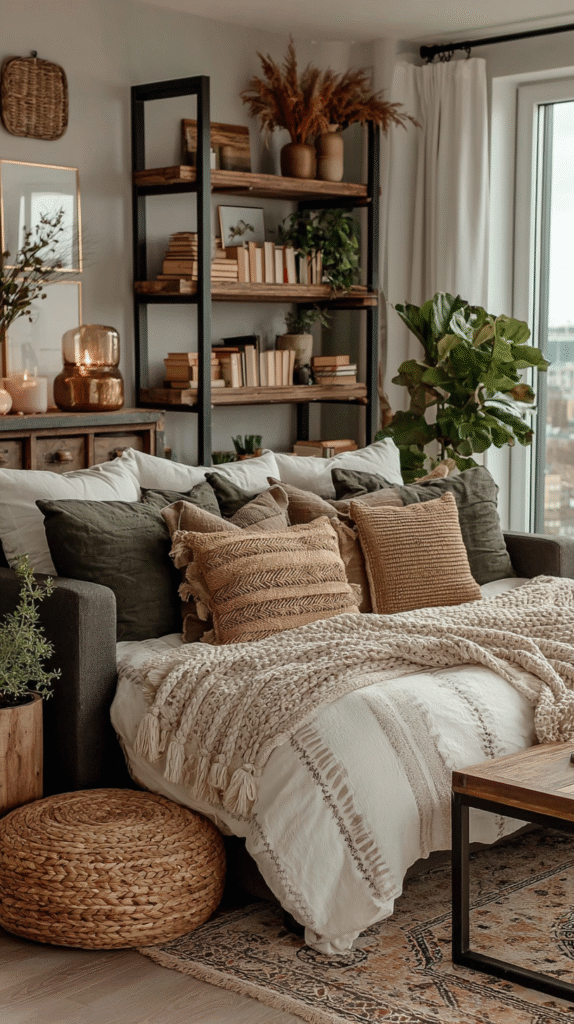
Every piece in a studio works harder. Multifunctional furniture allows you to create space without sacrificing comfort.
A daybed or sofa bed turns a sleeping area into seating during the day. A storage ottoman can hold blankets while doubling as a coffee table or footstool.
A fold-down desk gives a stylish workspace during the day but disappears when work is done.
These pieces create flexibility. Instead of your furniture dictating the layout, you decide how each moment of the day will unfold. Flexibility is a quiet form of peace.
Create Defined Zones
Without walls, zones give a studio structure. They allow your mind to separate rest from work, meals from relaxation.
You can define zones without heavy dividers. A natural wool rug beneath the bed marks the sleeping area.
A low shelf between bed and sofa creates a subtle boundary. A folding screen can add privacy without taking permanent space.
The key is to signal function. When you step onto a soft rug at night, your body knows it has entered the sleeping zone. When you sit by the window at a small table, you know this is for meals or writing. Zones help the nervous system settle into rhythm.


Go Vertical with Storage
Small apartments often lose space to cluttered floors. Vertical storage helps reclaim that air.
Tall bookcases, wall-mounted shelves, or cabinets reaching to the ceiling keep the floor clear. Floating shelves and wall hooks use space that would otherwise stay empty.
Even a single tall piece can shift the balance of the room.
It draws the eye upward, making ceilings feel higher. It also hides items that would otherwise collect on surfaces, creating visual quiet below.
Keep Furniture Low Profile
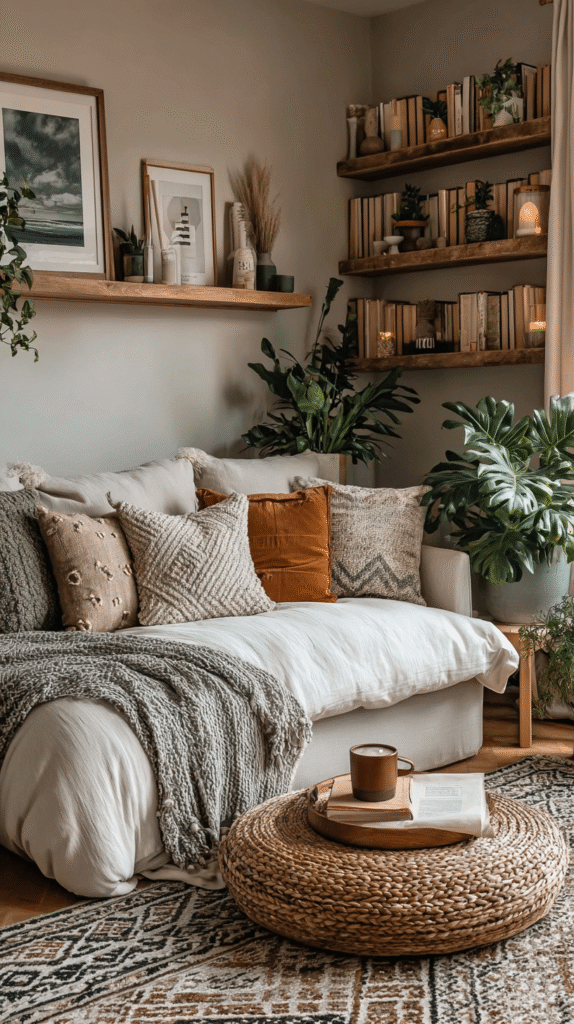
While some pieces reach upward, others should stay low. Beds with shorter frames, sofas with simple legs, and low coffee tables allow the ceiling to feel taller.
The less furniture blocks your sightline, the more open the space feels.
Low furniture creates visual flow. Your eye moves across the room without interruption, giving the impression of space that is larger than it is.
Balance tall storage with low seating so the room feels grounded and expansive.
Large-Scale, Grounding Pieces
It might seem that small spaces require small furniture, but too many tiny pieces create clutter. Large, grounding elements often bring more calm. One oversized rug unifies the room.
A single large art piece on the wall carries more presence than a gallery of small frames.
Think in terms of anchors. A big piece defines the space, while smaller items recede into harmony. Choosing fewer but larger pieces reduces visual noise and makes the apartment feel curated rather than crowded.
Hide the Clutter
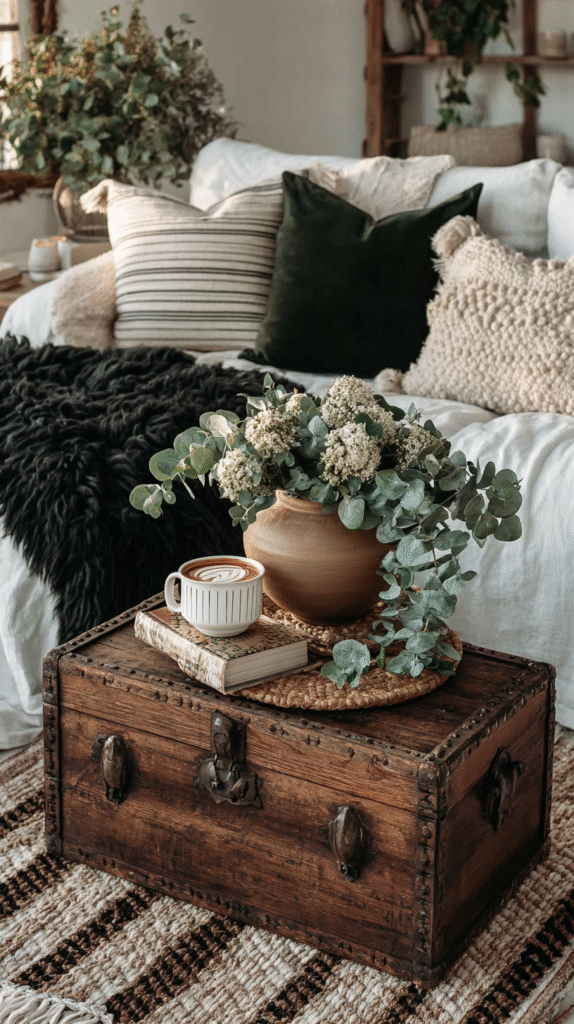
Clutter is the quickest way to shrink a studio. Hidden storage restores air.
Use under-bed drawers, baskets with lids, or storage ottomans to contain items you use daily. Keep surfaces clear except for one or two meaningful objects.
When you edit your belongings, keep only what serves you. This is not about cold minimalism but about creating visual rest. Each time you put something away, you give the room space to breathe.
If you want a simple practice that keeps your home feeling spacious, try building a 15-minute daily decluttering routine that instantly restores calm.
Soften Edges and Add Texture
Airy does not mean stark. Soft textures bring warmth without adding clutter.
Linen curtains that move in the breeze, a cotton throw folded at the edge of the bed, a woven rug underfoot. Rounded furniture or curved lamps soften the geometry of a small room.
Natural textures calm the senses. They create layers of comfort that feel peaceful without heaviness. Aim for a few tactile materials you love, repeated across the space for cohesion.
Intelligent Lighting Layers
When daylight fades, lighting takes over. Overhead lights are often harsh. Instead, layer light sources.
A floor lamp near the sofa, a table lamp by the bed, and a candle on the table create soft pools of glow. Warm bulbs are essential.
Multiple small lights allow you to adjust atmosphere. Bright enough to read, soft enough to relax. Evening light should invite your body into rest.

Maintaining Peace Over Time
A peaceful studio is not only created once. It is maintained in daily rhythms.
Reset your surfaces each evening, fold the blanket, clear the table, straighten the rug. Open curtains in the morning to let light wash through. Choose one day a month to edit belongings and release what no longer feels aligned.
These small habits protect the spaciousness you create. They remind you that peace is not only a design choice but a daily practice.
A more structured approach, like creating a weekly home reset, can make it easier to sustain long-term peace in a studio.
Small Steps, Lasting Calm
Your studio apartment can hold more than function. It can hold calm, breath, and presence. You do not need to apply all ten ideas at once. Begin with one. Perhaps you replace heavy curtains with sheer linen, or choose one larger rug to anchor the room. Notice how the space feels.
Air and peace are created in layers. Each small change carries weight. Over time, your studio becomes not only where you live, but where your nervous system can rest.




